Preparedness "TIPS"

KNOW BEFORE YOU GO.
It is important to have a prepared, rehearsed contingency plan ready for when you need to get away from the house quickly. Do not wait until the last minute to make decisions about where you will go because you will not always have the best decision-making skills while under duress in an emergency situation.
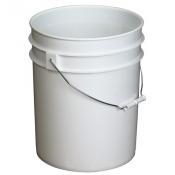
The Basics
Personal Backpack: Daily Needs, a quality bug out bag should feature the following:
- Crafted from thick, durable fabric
- Padded hip straps
- Water-resistant material
- Separate pockets and compartments
- Roll-top construction for expanded storage
- Airtight construction
Rolling Suitcase: Family Clothes and Blankets
Plastic Storage tote or 5 Gallon Handled Bucket with lid: Food, Water, First Aid Kit
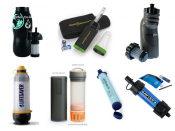
H2O (options)
- Water Bottles
- Water pouches
- Bladder Bags
- Water purification tablets
- Water Straws
- Life Straws (personal water filtration)
- Sawyer Mini (water filtration system)
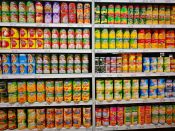
Food
Bring Whatever cooking canisters you will need depending on the kind of cooking you intend to do. Remember to keep it small and lightweight. I Include at least one item that can be used to boil water. Bring a Can opener and camping plates/utensils!
- Granola Bars
- Emergency Food Bars
- Protein Bars
- Oatmeal packets
- Jerky
- Peanut butter snack cups/crackers
- Freeze-dried meal pouches
- Dried Fruit and Vegetables
- Homemade MREs
- Meat in a tin or pouch
- Canned ready-meals
- Comfort Foods or special Dietary needs
Remember to label and date your food supplies so you can rotate them out periodically to maintain the best shelf life.
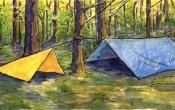
Shelter
Please pack according to the needs of your environment.
Take a night to camp in the backyard and use these supplies and build your shelters so that you will have the basic understanding of what you need to do. Trying to set up for the first time in a harsh weather event will make things even worse.
Shelter Supply ideas:
- Tent
- Tarp
- Rope or Paracord
- Emergency Blankets
- Sleeping Bag, Sleeping pad and/or blankets
- inflatable pillow
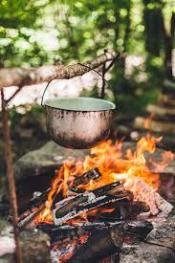
Fire/Heat
If you are having to be outside, fire can be a great way to warm you, to cook your food or even be a signal. Keep a couple different kinds of fire starters in different areas of your pack, safely wrapped from the elements. You will also have to think about portable cook stoves if you will not be able to start a full fire in order to cook your food.
- Matches: If you are going to use matches, be sure to store them in a waterproof case, even if they are waterproof matches.
- Lighters: Get a high-quality disposable lighter or Emergency Fire Kit.
- Portable Stove: small portable stoves that can burn wood like a rocket stove and save some weight.
- Portable grill for campfire: If you decide to cook food over a campfire, this is a great portable grill to have a stable platform to cook on.

Light
Do not just rely on battery operated flashlights because there is a whole world of solar power lighting options available to you now that are much better than they used to be. Invest in good lights.
Here are some options/ideas:
- Glow Sticks
- Headlamps
- Lanterns
- Personal flashlights
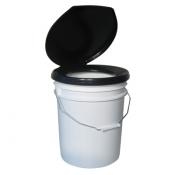
Sanitation & Hygiene
The need to go to the bathroom and be able to clean yourself will be a part of life even during an emergency. While doing something homemade may seem a great idea here, this is a time for convenience! Having some convenience products to clean with helps take a load off carrying more water, but do not discount needing water to clean with altogether.
- Wipes: bleach wipes to help clean surfaces, dishes, gear and more. Store these in zip top bags to keep them fresh instead of lugging around the container.
- Toilet Paper- JUST BECAUSE
- Toothbrush/Toothpaste
- Soap: you may choose to purchase body wipes for quick wipe downs instead of soap, but having a bar of hard soap will be useful for washing clothes, your hair and other items.
- Feminine hygiene products
- Trash Bags
- Hanging Solar Shower
Tip: Tuck a few large trash bags into your pack. Not only are they good for carrying and sitting on, they are good to cover your gear or body as rain protectors if you didn't pack ponchos.
Remember there are plenty of ways to make a temporary bathroom, just keep it clean and tidy and a safe way from your "home base" and water source.

Tools & Gear
Tip: Use a bright color of duct tape that can be used to mark trails or signal directions in wooded areas or buildings.
Useful tools to have in your emergency kit, remember this is just ideas for you to use to grow your kit from.
- Axe: cutting firewood or cutting away debris
- Shovel: to bury trash or waste products, put out campfires
- Knife:whether a sheathed knife or a large multi-tool, you need to have a sharp blade.
- Compass
- Air Filtration Mask: you can only survive 3 minutes without clean air
- Fishing Kit
- Folding Saw
- Small Crowbar
- Whistle
- Travel Sewing Kit
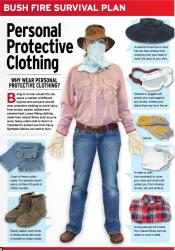
Clothes
A three day supply of clothes would be ideal, remember to pack for the weather conditions in your area. Also consider what type of emergency situations might cause you to evacuate and pack appropriately.
Have extra clothes suitable for whatever season you are in, plus extra socks. A sturdy pair of shoes is extremely important. You will want to be able to have dry clothes available if you get wet, be able to layer if cold and change into something clean if you get hot and sweaty, dirty or get injured.
Remember small children may have additional needs for clothing changes and pack appropriately.
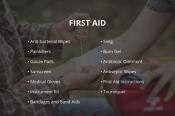
First Aid
A well-stocked first aid kit is essential for any disaster scenario.
- Anti-bacterial wipes: Bacteria can turn the smallest cut into a life-threatening wound. Be sure the first aid kit in your bug out bag includes anti-bacterial wipes.
-
Painkillers: Be sure to pack painkillers that can provide temporary relief in the case of injury. Essentials include ibuprofen and aspirin.
-
Gauze pads: If you or someone in your party is wounded or injured while outdoors, tackle open sores with gauze pads to keep the wound clean.
-
Sunscreen: Keep your skin protected when shade isn’t available and prevent severe sunburns.
-
Medical gloves: Medical gloves can help you keep a wound sterile and clean while bandaging and help prevent cross-contamination.
-
Instrument kit: A kit filled with necessary medical instruments can be useful in a myriad of ways. A comprehensive kit should include scissors, forceps, safety pins, and medical tape.
-
Bandages and Band-Aids: Keep cuts and wounds covered with bandages and Band-Aids to prevent contamination and reduce the chance of infection.
-
Tourniquet: This compression device can be a lifesaver. A tourniquet stops the flow of blood through a vein or artery by compressing a limb with tight bandages or cords.
-
Sling: In the event of injury, a sling can be used to support and immobilize that part of the body.
-
Burn gel: If you or a member of your party is burned, this gel can provide much-needed relief and soothe the skin.
-
Antibiotic ointment: Antibiotic ointments typically contain pain-relief ingredients to soothe cuts, scrapes and burn. These ointments also prevent infection and promote healing.
-
Antiseptic wipes: These wipes can be used to clean wounds, help ensure an area is sterile before procedure, and prepare skin for impending cuts.
-
First aid instructions: It’s all well and good to have a comprehensive first aid kit, but what about situations in which instructive care is needed? A good bug out bag should include first aid instructions, including CPR tips, and steps required for other basic injury care.
-
EpiPen
-
Prescription medications

Pets
Preparing your pet for an emergency is very similar to what you prepare for yourself, with a few modifications.
- Food supply for 72 hours: Pets don't eat the same food as us. Human food can be poisonous to pets, and it doesn't give them the nutrients they need. It is important to have a kit where your pet can have food to keep it healthy.
- Water supply for 72 hours: You won't always have access to clean water, so having water set aside in any kit is vital, and the same goes for your pet.
- Food and water dishes: Sure, a pet can eat food off the floor, but what about water? It is important to have something that your pet can drink out of so they can stay hydrated.
- Medications: If your pet is on any medication, they will still need it when an emergency arises. Make sure that your pet emergency kit has all the medications they will need.
- Collar and leash: Your pet is going to need to move around. If you don't have a leash, then when frightened, your pet may run away. Pet-friendly shelters will almost always require your pet to be on a leash.
- Pet waste bags and/or litter box: Preventing the spread of bacteria and disease is one of the most important considerations during a disaster. All animals create waste, and it is important to clean up after your pet. Having a way to do that will help you maintain a clean shelter.
- A picture of your pet and you: Your pet might get lost or run away during the frightening emergency situation. Having a picture of your pet is a great idea, but it is even better if you are in the picture as well. This can be further proof to others that your pet belongs to you.
- Records: Having documentation is important. Shelters may need a vaccination record and documentation that your pet does indeed belong to you. You may also consider having your pets chipped by your veterinarian. Having information on your pet can also help if you are sheltering your pet at a pet motel or with a friend.
- Carrying case: When a small dog or cat gets frightened, it might be difficult to get them to safety. They might not walk on their own, and if you simply pick them up they might jump out of your arms. By having a carrier, you can eliminate these issues.
- Rope and stake: By having a rope and stake, your dog will be able to move around freely in a restricted area. This can help keep them at your camp, or wherever you may be, and still have a bit of freedom. This will also take the worry off your mind of keeping an eye on them, or always holding a leash.
- Blanket: Having some comfort for your pet can make a huge difference when their world collapses. If you have to evacuate, this can hold a lot of security for them.
- Treats: Helping your pet be at ease can make a huge difference for them. Adding treats to your emergency kit can help give your pet comfort and a reward for being good.
- Toys: Giving your pet a little security can go a long way. By having toys it can help calm your pet when they are in a stressful environment. If you have small children, it can also help distract them as they play with their pet.
- Whistle: There is a possibility that you will get lost, or your dog will. Dogs tend to react to whistles, and it can help them find you. If you and your dog are lost, it can help rescuers find both of you. Take some time to train your dog to come to the sound of the whistle
Tip: Get your dog a tactical carrier vest, this will allow your pet to carry many of their own personal emergency supplies.

Communications
Create a Family Emergency Communications plan. You may not be with your family when an emergency occurs. Know how you plan to reconnect, who is your "outside" family member to check in with.
Communication Networks such as mobile phones and computers may be unreliable during a disaster and electricity may be disrupted. Plan for such occurrences to ensure that all of your family members know how to reach out to each other and where to meet up.
When using a cell phone, a text message may go through when a phone call will not. Have a list of important numbers, incase your battery dies. Have a designated alternative person who can pick up children if you are unable to. Have an emergency meeting place, if possible store a set of emergency supplies at the location.
Maintain extra batteries, a hand crank powered radio, back up chargers and even walkie-talkies in your emergency supply bag.

Maintaining Your Kit
After assembling your kit remember to maintain it so it’s ready when needed:
- Keep canned food in a cool, dry place.
- Store boxed food in tightly closed plastic or metal containers.
- Replace expired items as needed.
- Re-think your needs every year and update your kit as your family’s needs change.
Kit Storage Locations
Since you do not know where you will be when an emergency occurs, prepare supplies for home, work and cars.
- Home: Keep this kit in a designated place and have it ready in case you have to leave your home quickly. Make sure all family members know where the kit is kept.
- Work: Be prepared to shelter at work for at least 24 hours. Your work kit should include food, water and other necessities like medicines, as well as comfortable walking shoes, stored in a “grab and go” case.
- Car: In case you are stranded, keep a kit of emergency supplies in your car.

